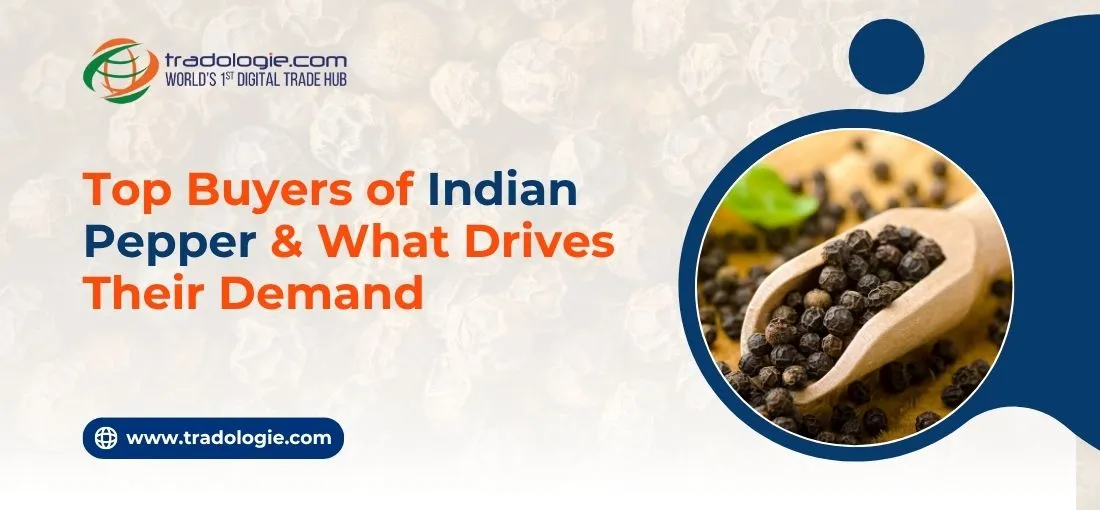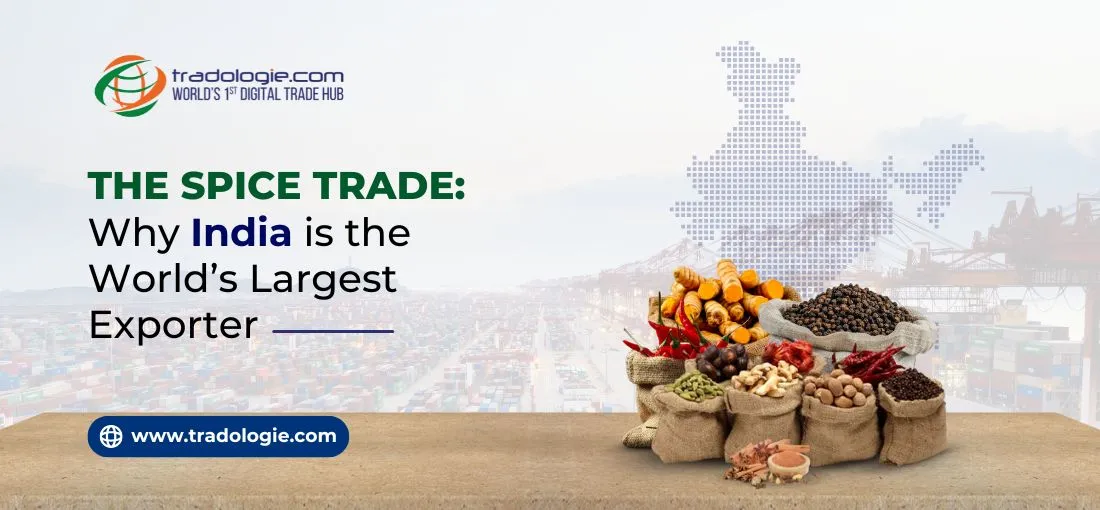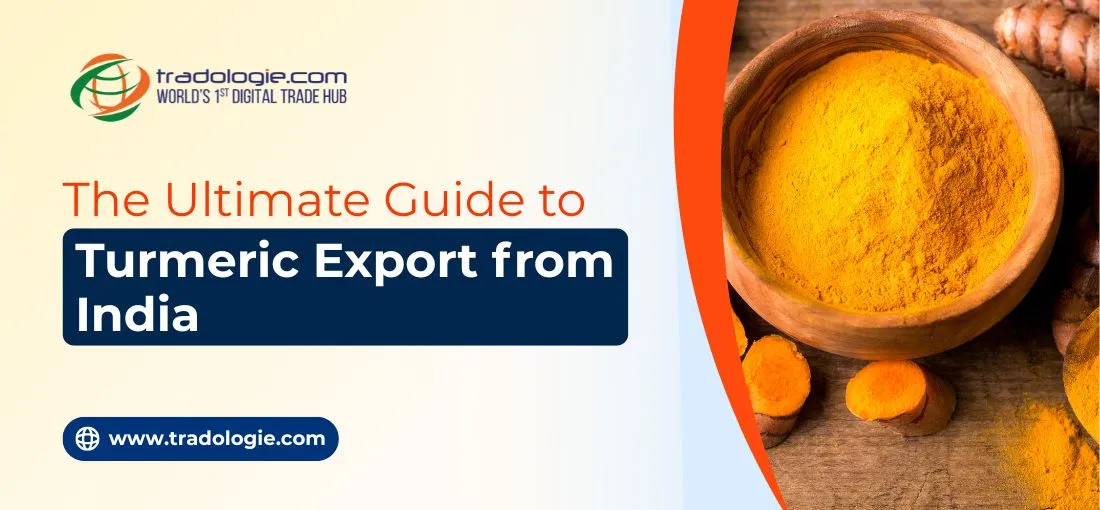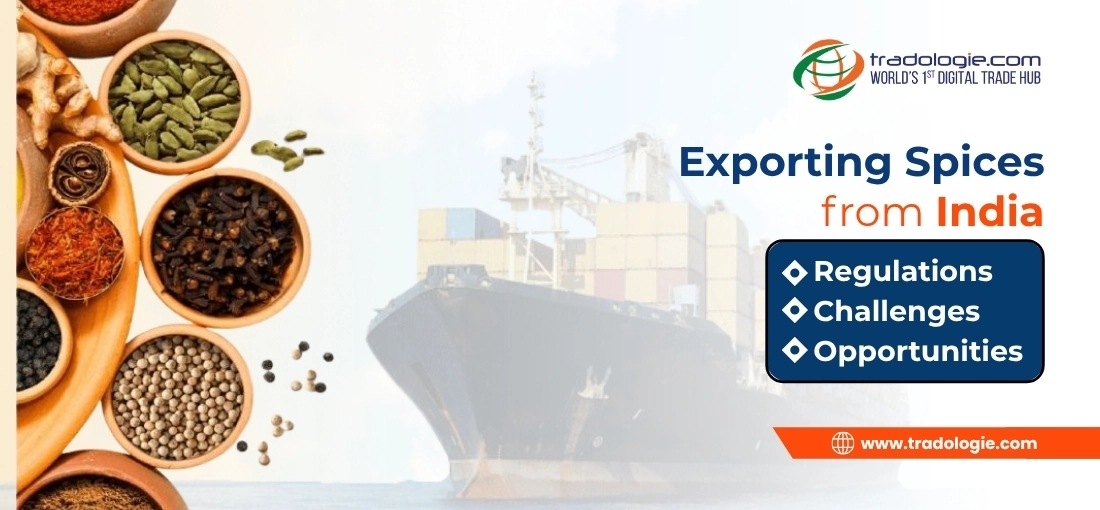Top Buyers of Indian Pepper & What Drives Their Demand
We all know that India is an agro-nation, where 70 % of people's livelihood still depends on agriculture. India is the second largest producer of agro-products in the world. Almost all types of agricultural products are exported from India to other nations globally. The global pepper market size was valued at USD 5.5 billion in 2024 and is projected to expand to over 2.3% CAGR from 2025 to 2034.
In 2024, India yielded around 100,000 tons of pepper, a considerable growth from last year's 80,000–85,000 tons. This growth indicates India's important role as a black pepper exporter (sellers). With the increasing global demand for Indian pepper, major importers from all over the world depend on this spice for their culinary, medicinal, and industrial purposes.
In this blog we will explore the top Indian black pepper importers and the key factors driving their demand.
Top Buyers of Indian Black Pepper
Several nations have consistently emerged as top buyers of Indian black pepper, reflecting both historical export-import relationships and evolving market dynamics:
1. United States:
The United States is a largest black pepper importer (buyers) from India, led by the food processing sector that uses it in packaged foods, seasonings, and sauces. The nation's rising demand for organic and sustainably sourced spices has also supported demand for Indian black pepper. Further, the growing popularity of Indian food in the U.S. has also supported its import demand. Major US spice companies and food chains use Indian pepper to ensure authenticity in their products.
2. Vietnam:
Although Vietnam is a top black pepper exporter (seller), it also buys Indian pepper for re-exporting and blending to markets at international level. You know Indian Malabar pepper and Tellicherry pepper are of high quality due to their oil content and rich flavor, which complement the overall standard of Vietnamese pepper blends. Vietnam's processing industry has strategically imported Indian black pepper for fulfilling the diverse demand of importers worldwide, particularly in Europe and North America.
3. European Union (Germany, Netherlands, UK):
Currently, Europe remains a significant market for Indian black pepper, especially for high-quality organic and sustainably produced black pepper. Germany and the Netherlands act as key re-export hubs, spreading Indian pepper to other European nations. Germany has high standards that demand pesticide-free and sustainably grown black pepper, while the UK’s demand is driven by its large Indian and Asian community. European food producers, spice businesses, and restaurants buy high quantities of pepper from India to meet the growing demand for strong and aromatic flavors.
4. Middle Eastern Countries (UAE, Saudi Arabia, Iran):
Indian pepper is a staple in Middle Eastern cuisine and is mostly used in spice mixes such as Baharat and Za’atar. The UAE, being a big re-exporter, imports Indian black pepper and distributes it to other Gulf nations. Saudi Arabia’s hospitality and food sector is dependent on Indian pepper for its use in traditional meals and spice mixtures. Iran, though a smaller market, is very fond of Indian pepper because of its good quality and strong aroma.
5. China:
China mainly imports Indian black pepper for its pharmaceutical and traditional medicine industries. Indian black pepper is appreciated in Traditional Chinese Medicine (TCM), because of its anti-inflammatory and digestive characteristics. The growing awareness of Ayurveda in China has also increased its demand. Additionally, China’s growing spice processing industry also buys Indian pepper as an input in the preparation of mixed spice blends and condiments.
Factors Driving Demand for Indian Black Pepper
Several key factors drive the global demand for Indian black pepper, including its rich flavor, high piperine content, and medicinal benefits. The rising spice consumption in processed foods and traditional medicine further boosts demand. Additionally, re-export strategies by nations like Vietnam enhance its global reach. Some factors are as follows:
Quality and Unique Flavor Profile:
Indian pepper, especially Malabar and Tellicherry types of pepper, is known for its good quality, strong aroma, and high piperine content. This makes it stand out from competitors such as Vietnam and Indonesia.
Increasing Global Spice demand:
This is a very important factor which drives the demand of india pepper in the global spice market. The global market for spices is estimated to expand at a CAGR of 5.3% between 2023 and 2028 (Mordor Intelligence), demand for Indian pepper keeps increasing both in domestic and business sectors.
Rising Demand in Processed Food Sector:
The rising demand for convenience foods has significantly increased the use of black pepper in seasonings, spice blends, and condiments. With the expansion of the global processed and packaged food industry, black pepper is a key ingredient in ready-to-eat meals, soups, and snacks. Its bold flavor and preservative properties make it a preferred choice for food manufacturers worldwide. This trend is particularly strong in markets like the U.S. and Europe, where processed food consumption is on the rise.
Health and Medicinal Benefits:
Black pepper is extensively used in Ayurveda and traditional medicine because of its antioxidant and anti-inflammatory activities. The pharmaceutical and nutraceutical industries in Europe and China have substantially raised their imports for medicinal purposes.
Re-Export Strategies:
Nations such as Vietnam re-export black pepper, taking advantage of their geographical location in international export- import networks. This enables them to satisfy the needs of markets where Indian black pepper is in high demand but could be subject to direct export restrictions.
Conclusion
The demand for Indian black pepper is driven by a combination of many factors like culinary culture, health, industrial use and the inherent quality characteristics of the spice. As consumption patterns change globally, it becomes crucial for stakeholders in the pepper value chain to understand these demand drivers. By coordinating production and marketing efforts with the needs of major importers, India can strengthen its position as a top black pepper exporter and ensure continued growth in this dynamic industry.




.webp)
